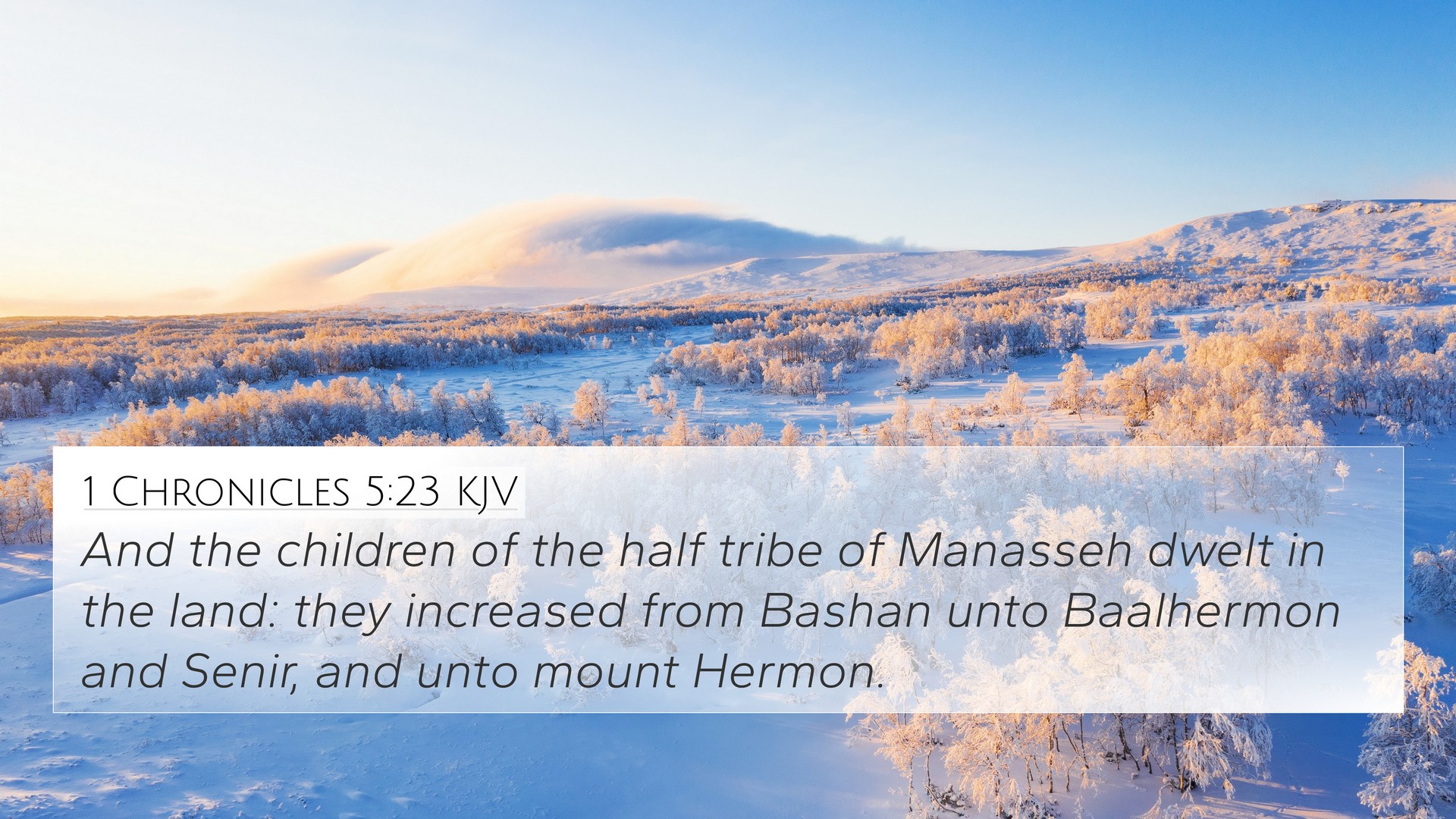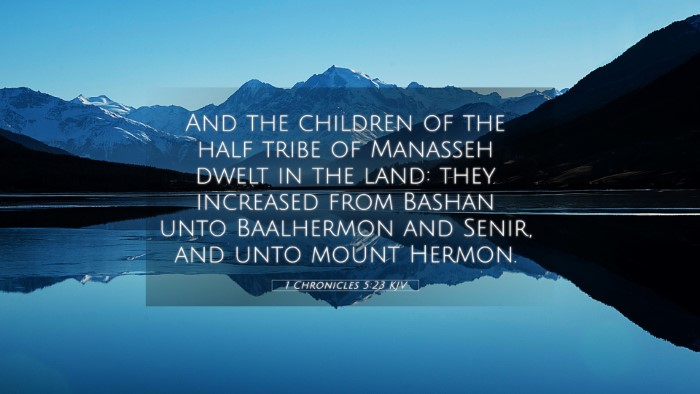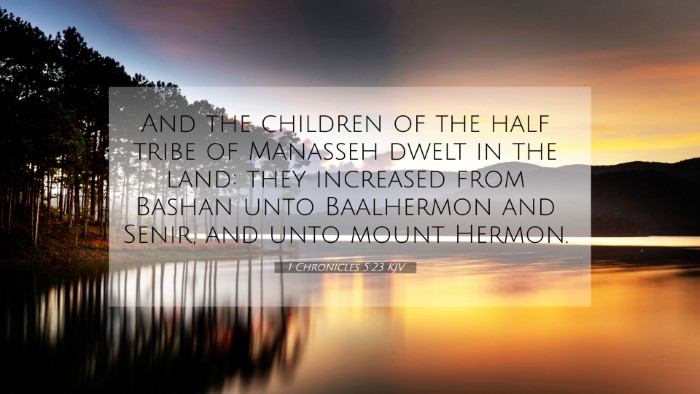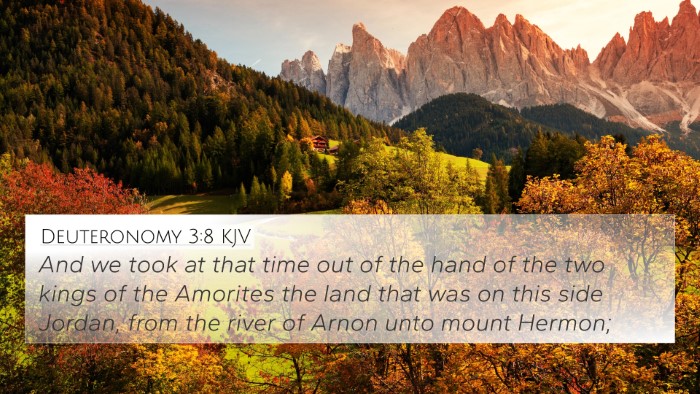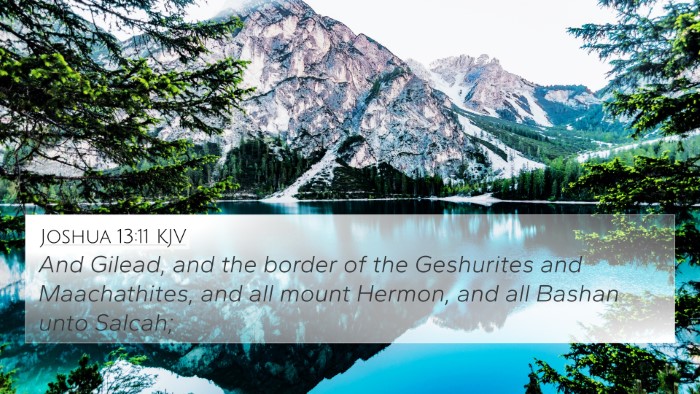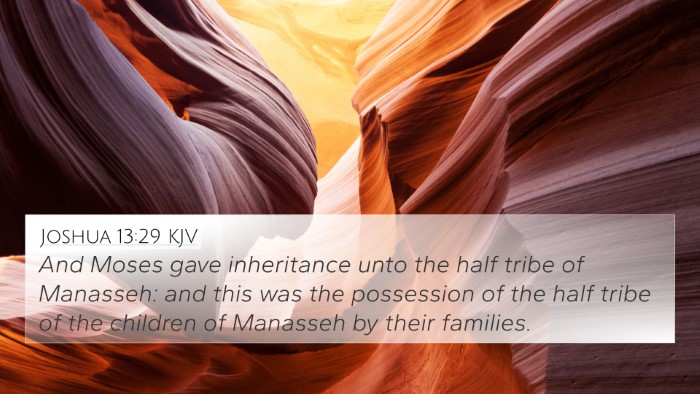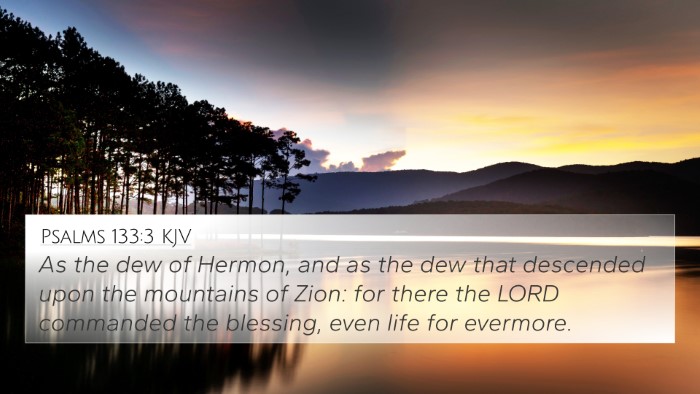The Meaning of 1 Chronicles 5:23
Bible Verse: 1 Chronicles 5:23 - "And the children of the half tribe of Manasseh dwelt in the land: they increased from Bashan unto Baal-hermon and Sinir, and unto mount Hermon."
Overview
This verse highlights the prosperity of the half-tribe of Manasseh as they settled in the land beyond the Jordan. It indicates their growth and the vast region they occupied, which extends from Bashan to Mount Hermon. The verse also serves as a historical note about the tribes of Israel and their territorial divisions.
Commentary Insights
The insights from various public domain commentaries help illuminate the meaning and significance of this verse. Below are the key interpretations:
Matthew Henry's Commentary
According to Matthew Henry, this passage reflects God's faithfulness to His people despite their challenges. The half-tribe of Manasseh's success and population growth demonstrate the fulfillment of God’s promise to give them land, which signifies divine providence and blessing. The reference to Bashan is particularly noteworthy as it was known for its fertility and strength.
Albert Barnes' Commentary
Albert Barnes comments on the geopolitical significance of the territories mentioned. He notes that the geographical expanse from Bashan to Mount Hermon shows the strategic location for Israel, offering rich pastures and defensive advantages. The enumeration of these lands highlights the prosperity and strength gained by the half-tribe as they expanded and settled into significant areas.
Adam Clarke's Commentary
Adam Clarke emphasizes the extensive nature of the land possessed by the Manassehites, suggesting that their territorial gains were both a result of divine blessing and their own military strength. Clarke also brings to attention the cultural implications of their settlement in such regions, which were traditionally rich in resources and favorable for agriculture, indicating a time of peace and abundance for the Israelite tribes.
Cross References in Scripture
This verse can be linked to various other biblical texts that provide a deeper understanding of its themes:
- Deuteronomy 3:13-14 - Discusses the territories given to the tribes of Manasseh and their conquests.
- Joshua 13:30 - Further describes the lands occupied by the half-tribe of Manasseh.
- Numbers 32:33 - God’s command regarding the allocation of land to the tribes.
- Genesis 48:16 - The blessing of Jacob upon Ephraim and Manasseh.
- Psalm 22:12-13 - Metaphorical language reflecting strength akin to the region of Bashan.
- Joshua 1:15 - Encouragement for the Reubenites and Gadites to assist in the conquest of Canaan.
- Revelation 7:6 - Mentions the tribe of Manasseh in the context of the 144,000 sealed servants of God.
- Micah 7:14 - Prayer for God to shepherd His people, akin to the promises made to the tribes.
- Isaiah 10:33-34 - Imagery of the might of Lebanon, which connects to the stronghold of Mount Hermon.
- Matthew 10:6 - The mission of Jesus' disciples to the lost sheep of the house of Israel, indicating the ongoing significance of the tribes.
Conclusion
The analysis of 1 Chronicles 5:23, as explored through various commentaries, reveals the divine favor that led to the growth and prosperity of the half-tribe of Manasseh. The verse emphasizes God's promises fulfilled in the lives of His people and establishes connections with other scriptures, enriching our understanding of the narrative of Israel's tribal divisions. Through comprehensive cross-referencing, one can appreciate the deeper theological and historical insights this verse provides.
Using Cross-References Effectively
For those interested in exploring the rich tapestry of Biblical connections represented in scriptures like 1 Chronicles 5:23, utilizing tools for Bible cross-referencing can be invaluable. These resources help navigate through thematic and narrative links across both the Old and New Testaments, enhancing one’s study and understanding of scripture.
Practical Tips for Cross-Referencing
- Utilize a Bible concordance: This tool allows you to find specific terms and their occurrences across the Bible.
- Employ a cross-reference Bible study guide: Guides can help identify key relationships between verses.
- Explore thematic Bible verse connections: Connecting similar themes helps reveal the unity in scripture.
- Engage in comparative Bible verse analysis: Compare verses that speak on similar events or themes for comprehensive insights.
- Use a Bible cross-reference system: Familiarize yourself with various systems that denote connections between verses.
